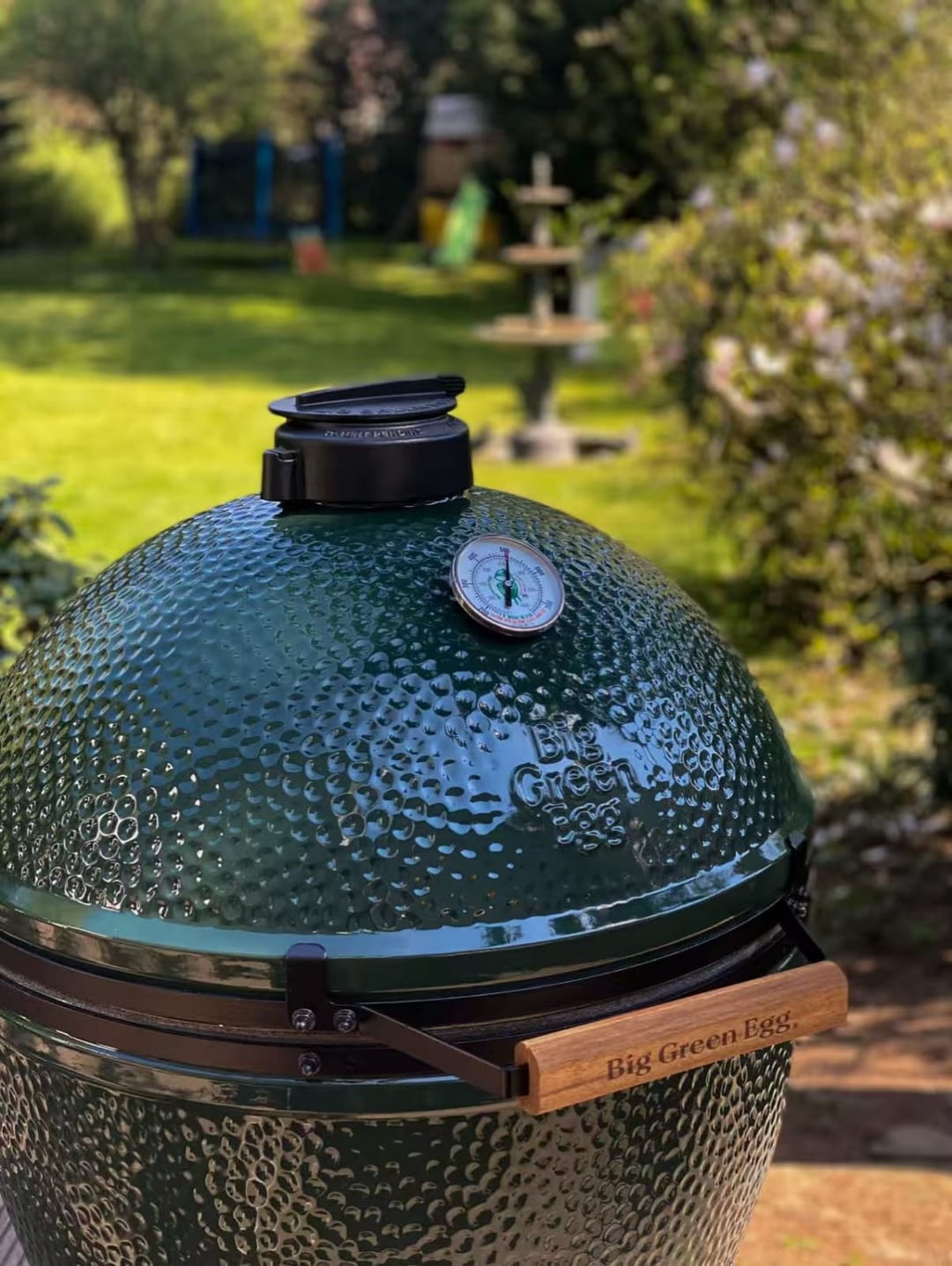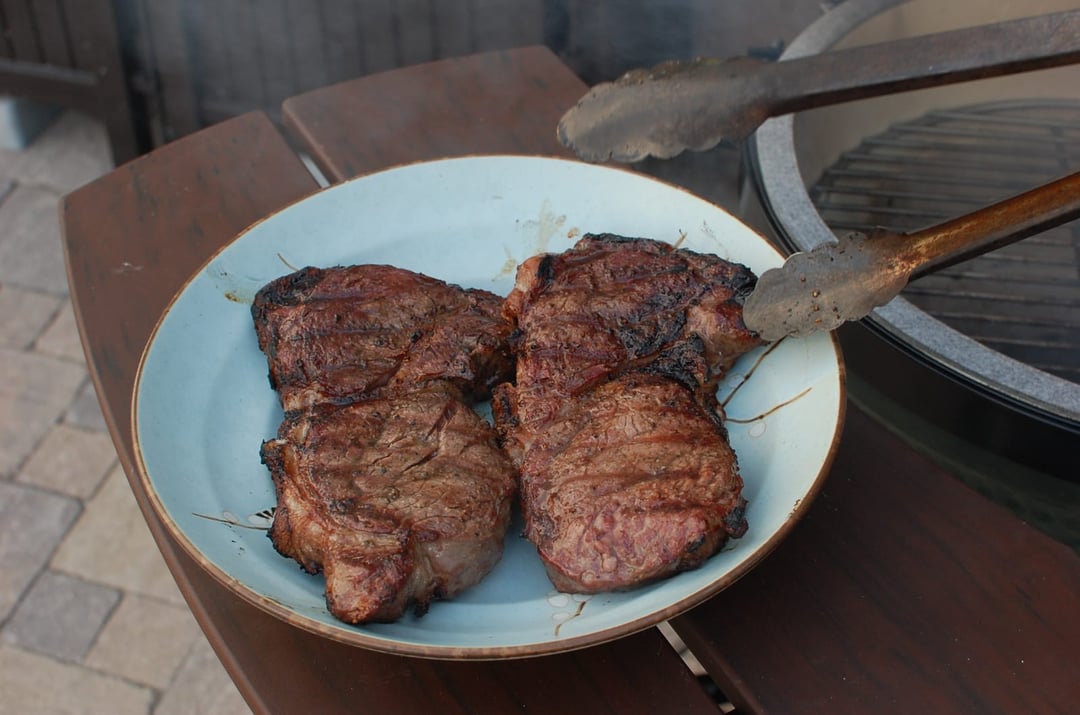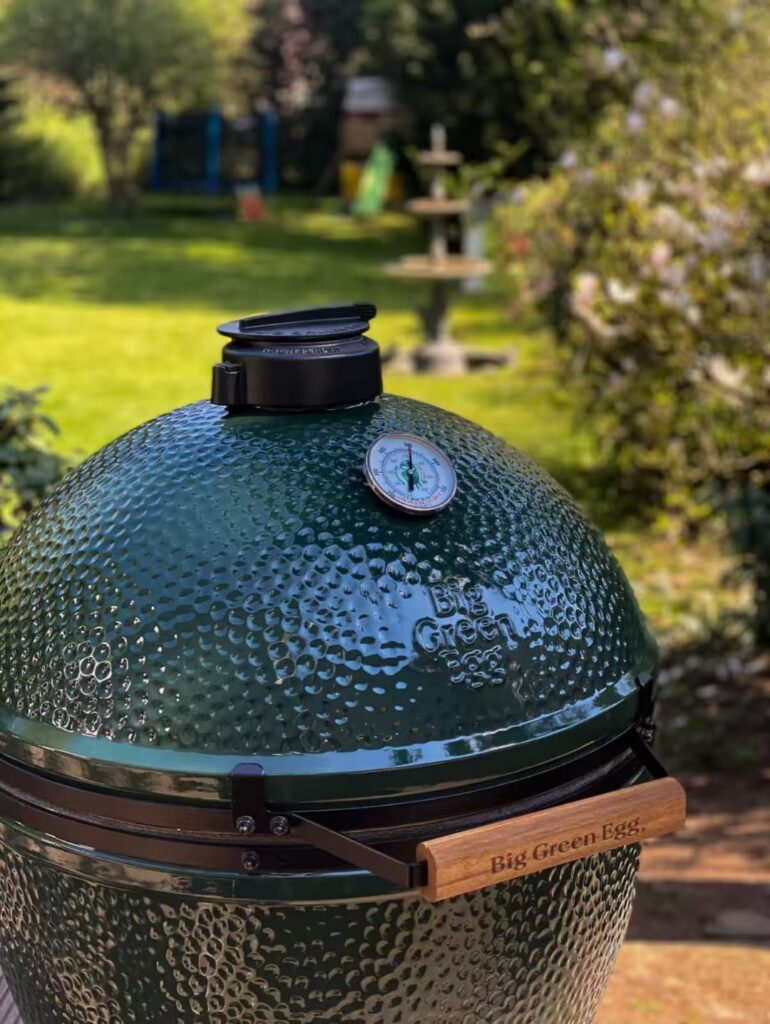

Typhur week 11-2.1.jpg
Typhur week 11-2.2.png
Just got my Big Green Egg (Large) a few weeks ago, and I’ve been slowly learning my way around it. Over the weekend, I grilled a couple of ribeye steaks using what I thought was a solid setup, but the end result was just okay. Not bad, but not quite what I was hoping for in terms of crust and doneness.
Here's what I used:
– Charcoal: Fogo Super Premium
– Grill grates: Cast iron grates (OEM)
– Thermometer: Typhur Sync Dual (used both of the 2 probes)
– Cook method: Reverse sear – indirect to 115°F internal, rested briefly, then seared at around 600°F
The steak came out medium-rare as planned, but the sear wasn’t very even, and the texture was a bit drier than I expected. I’m wondering if I missed something small.
So – for those of you with more experience,
What little things have you learned over time that made a noticeable difference?
Could be anything. A tool, a temp trick, something with airflow, or even the way you rest the meat. I’d love to hear the kind of subtle tweaks.
by im_hvsingh


22 Comments
Ensuring excellent airflow
An ash basket made a big difference for me. Doesn’t have to be the kick ash basket, but one off Amazon will work fine.
The dome thermometer is wildly inaccurate, get a grate level probe like smoke signals or similar. Found out I was cooking most things way too hot.
Quality lump charcoal
Beautiful picture!
Brine your meat. All of it.
You’re not searing hot enough. Don’t get too hung up on procedure and tools. Get hung up on experimenting and perfecting. Next time get the bge nuclear (600+) after the initial low and slow, you won’t have a problem with your sear.
The KickAsh basket and kickAsh can (or knockoffs) were very impactful to my cleaning routine. I mean VERY!!!
The eggspander system (not the whole system because I found the upper rack that it came with isn’t very useful to all the things I cook: the uppers may be helpful to others I just don’t use them) but that basic lower cradle has been wonderful when removing the main grates because of its handles to just pick everything up out of the egg. Especially mid cook if I need to add something to the coals.
Look up the “two zone” method. Easy to do and very effective.
Even spread of fully lit coals. Use the Eggspander rack flipped over then use the small grate to get nice and close. Make sure your steak is fully dry before cooking.
When I get a new bag of coal, I sort it into bins for my task. Large chunks get put in the high heat/steak pile. the smaller bits go in a “low and slow” pile. It is all about fuel and air control with your task.
Airflow and a good method to light the fire are crucial. The biggest thing is to sometimes not overthink or overly-complicate the process.
Reverse searing works well for a thick cut. For that steak, I’d skip the step and go straight to a direct grill. You can start at a lower temp, then ramp it up as needed for the nice char.
Clean ash next day after each cooking, also master your favorite dish that would make you using it on weekly or biweekly basis, so it doesn’t stay unused for months. This helps keeping skill of knowing your grill on how to dial it promptly and get reproducible good result with each cooking.
Crushing a dozen beers before starting a cook
Mixing in a bunch of seasoning when when shredding the pulled pork. It makes it go next level.
I cook wings directly at first until they start to look the right amount of char, then I throw the plate in. It slows down the cook by a lot… now that i think of it, I bet if you warm it up that won’t happen. Either way! It allows you to cook the wings with a char, and then not burn the bbq sauce once you toss them.
Lots of good suggestions here, but it also looks like those steaks are just on the border of needing a reverse sear in terms of thickness.
I think if you dry brine those, unwrapped in the fridge for a few hours, ideally overnight, and then sear on a fairly high heat, about a minute or two each side, then rest in a warm place for 10 mins, you’ll get what you need.
Also – every time you put something on the grill, or turn it, pat it with a paper towel. That was the first thing I thought of when I saw the colour of your final steaks.
Not overthinking/over complicating things
I’m going to state a probably controversial opinion but, don’t get too fancy with your cook. Heat up your egg to 400-450, pat your meat dry, add salt and I like Montreal Steak Seasoning. I also use the Chef IQ temperature probes. Cook them over direct flame and flip when the probes tell you to, and pull them off when the probes tell you to. I cooked two NY strips the other night that literally melted in my mouth and were so flavorful.
Kick Ash bucket, air flow, and using enough charcoal from the start.
For me it’s planning/patience. If I start the lighting process with less than 1 hr before the food has to be on, my results are a crapshoot. If I start 2 hrs ahead and sort the temp and smoke out early, whatever, I let it go and waste some charcoal, not the end of the world.
I bought another insert to raise grate higher in dome. Took and leave out that insert that, frankly I dont know what it supposed to do. The one that looks like a plate. I need another insert to raise inother inch or two. That will put meat above the egg and into dome.
Q: What little things have you learned that made a difference?
A: Mindset. Enjoy the experience.
While learning, you will read and hear a million things people swear is the “right way” of doing things. Take all the input and enjoy what works for you. Don’t worry about flare ups, or differing views on wrapping, etc, test and learn. Have a plan B if you are worried about feeding a horde with an uncertain cook.
A hobby should bring enjoyment, not stress. Stay in the fun zone.
Note: preventing a table/house fire falls into maintaining enjoyment. Learn what people did/didn’t do to avoid risks.